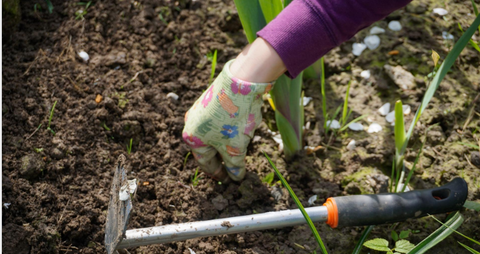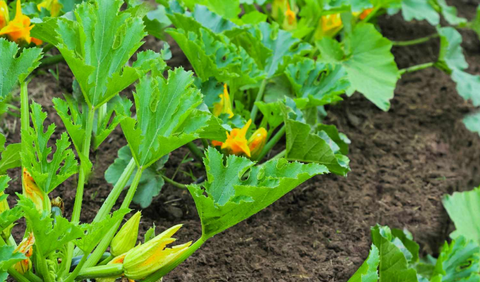Ferns have a mystique that transcends their verdant fronds. With their prehistoric lineage and lush textures, they bring an ageless charm to any setting. Ferns thrive across a variety of environments, making them one of the most versatile plants to cultivate. Their graceful, feathery appearance and resilience ensure that wherever you choose to grow them, they will transform the space into an oasis of green tranquility. From compact indoor corners to expansive shaded gardens, ferns are the unsung heroes of botanical design.The following content also has some reference value for raised garden beds.
Why Ferns Thrive in Different Environments
Ferns have evolved over millions of years, adapting to myriad ecosystems from tropical rainforests to temperate woodlands. This adaptability means they can flourish under conditions where many other plants might struggle. Whether dealing with low light, high humidity, or even rocky, dry soil, there’s a fern that has found a way to thrive. Their roots are structured to extract moisture efficiently, while their fronds can photosynthesize even in dim conditions, making them perfect for spaces that are often overlooked.

Ferns for Small Spaces: Compact, Elegant, and Low-Maintenance
Best Ferns for Apartment Living: Greenery in Tight Quarters
Living in an apartment doesn’t mean sacrificing greenery. The Maidenhair Fern (Adiantum) is delicate and compact, perfect for adorning windowsills and small shelves. For a splash of drama, the Button Fern (Pellaea rotundifolia) offers dark green, coin-shaped leaves that are eye-catching yet space-conscious.
Ferns That Flourish in Small Garden Beds and Containers
Small garden beds or containers benefit from the delicate touch of ferns like the Autumn Fern (Dryopteris erythrosora), whose coppery fronds mature to a soft green. This fern adds seasonal interest as it changes colors and fits beautifully into compact spaces. The Lemon Button Fern (Nephrolepis cordifolia 'Duffii') is another excellent choice with its petite, lemon-scented fronds, perfect for tabletop arrangements or patio pots.
Hanging Ferns: Perfect for Balconies and Patios
For a lush, cascading look, hanging ferns like the Boston Fern (Nephrolepis exaltata) are ideal. Their drooping fronds create a waterfall effect, making them a showstopper on patios and balconies. Pair them with the Creeping Wood Fern (Dryopteris remota) for a textured, layered appearance that adds depth to vertical spaces.
Ferns for Shaded Gardens: Low Light, High Impact
Ideal Ferns for Deep Shade: Let Your Garden Shine Without the Sun
Shaded corners don’t have to be barren. The Hart’s Tongue Fern (Asplenium scolopendrium) is a standout with its long, undivided fronds that add structure to shadowy spaces. For a softer look, the Soft Shield Fern (Polystichum setiferum) thrives in deep shade, spreading its finely divided fronds to create a lush, green blanket.
Best Ferns for Partially Shaded Areas: Balancing Light and Darkness
In areas with dappled sunlight, the Western Sword Fern (Polystichum munitum) comes into its own. Its sturdy, upright fronds create a striking silhouette that balances well with flowering perennials. The Christmas Fern (Polystichum acrostichoides) is also a reliable choice, retaining its green foliage year-round and adding a touch of life to wintry gardens.
How to Create a Beautiful Fern-Shaded Garden
To design a captivating shaded garden, layer ferns with different textures and heights. Combine taller ferns like the Ostrich Fern (Matteuccia struthiopteris) with ground-covering varieties like the Evergreen Wood Fern (Dryopteris intermedia). Interspersing ferns with shade-tolerant plants such as hostas and astilbes enhances the lush, forest-like ambiance and creates a dynamic space that changes with the seasons.
Ferns for Bright, Sunlit Spaces: Thriving in the Sun
Best Ferns for Full Sun Exposure: Hardy and Sun-Loving
While most ferns prefer the cool shade, some can handle the intensity of full sun. The Bracken Fern (Pteridium aquilinum) is one such variety, known for its hardiness and ability to thrive in sunny spots. Another sun-tolerant choice is the Rock Brake Fern (Cryptogramma crispa), which brings a touch of wildness to rock gardens and dry landscapes.
Ferns That Tolerate Both Sun and Shade: Versatile and Adaptable
For versatility, consider the Shield Fern (Polystichum spp.), which can handle both sun and partial shade. This adaptability makes it an excellent companion for mixed beds where sun exposure varies. The Holly Fern (Cyrtomium falcatum) is also a great contender, bringing a glossy, robust look to garden edges and borders.
Tips for Growing Ferns in Sunny Areas Without Burning Them
Ensure sun-loving ferns are planted in well-drained soil and kept consistently moist to prevent frond scorch. Mulching around the base helps retain moisture and protects roots from the heat. For extra-hot climates, provide some afternoon shade to keep the ferns thriving.
Ferns for Indoor Spaces: Bringing the Outdoors In
Top Ferns for Indoor Environments: A Green Oasis at Home
Indoors, the Bird’s Nest Fern (Asplenium nidus) shines with its compact form and shiny fronds. The Kimberly Queen Fern (Nephrolepis obliterata) is another great indoor fern, boasting a more upright growth that’s perfect for corners or as a centerpiece on large tables.
How to Care for Ferns in Indoor Spaces with Low or High Humidity
Ferns thrive in humidity, so misting them regularly or placing a humidifier nearby can replicate their natural environment. In drier conditions, choose hardier varieties like the Boston Fern, which can tolerate occasional dryness. Positioning ferns in bathrooms or kitchens, where humidity is naturally higher, can also ensure they flourish.
Ferns That Add Texture and Style to Your Living Room
Add texture to living spaces with the feathery elegance of the Maidenhair Fern or the unique, serrated edges of the Crocodile Fern (Microsorum musifolium). These ferns pair well with modern and classic decor alike, adding an organic touch that softens hard edges and enhances a room’s ambiance.

Ground-Covering Ferns: Creating Lush, Green Carpets
Best Ferns for Ground Cover: Covering Bare Soil with Beauty
The Hay-Scented Fern (Dennstaedtia punctilobula) is ideal for covering large areas with a soft, green carpet. For a more textured look, the Japanese Tassel Fern (Polystichum polyblepharum) offers shiny, arching fronds that create a lush, layered effect.
Ferns for Steep Slopes: Low Maintenance and Erosion Control
Steep slopes can be difficult to maintain, but the Bracken Fern and the Ostrich Fern are perfect for these challenging areas. Their robust root systems help prevent soil erosion while creating a visually appealing landscape.
How to Create a Full Ground-Covering Fern Landscape
Plant a mix of ferns with different heights and textures for a rich, ground-covering effect. Combine low-growing varieties like the Evergreen Wood Fern with taller, wilder ferns like the Cinnamon Fern for a garden that’s both functional and beautiful.
Ferns for Woodland and Forest Gardens
Creating a Woodland Garden with Ferns: Layering for Depth
A woodland garden is a dream for any fern enthusiast. To create this space, think in layers. Start with taller ferns like the Ostrich Fern (Matteuccia struthiopteris) as the background, and layer in medium-sized varieties such as the Lady Fern (Athyrium filix-femina). Add low-growing ground covers like the Evergreen Wood Fern (Dryopteris intermedia) to complete the look. This layered approach mimics the natural undergrowth of a forest and adds depth and dimension to the garden.
Native Ferns for Natural, Low-Maintenance Forest Gardens
Embrace native varieties for a garden that’s both beautiful and easy to maintain. The Christmas Fern (Polystichum acrostichoides) and the Sensitive Fern (Onoclea sensibilis) are native to many temperate regions and require minimal attention. Their resilience ensures they thrive in the dappled sunlight and moist conditions of a forest-like setting, bringing a touch of the wild to your backyard.
Ferns That Thrive in Moist, Cool Environments
Cool, damp environments are a fern's paradise. The Royal Fern (Osmunda regalis) and the Cinnamon Fern (Osmundastrum cinnamomeum) excel in these conditions, with their lush, feathered fronds creating a serene, enchanted look. Plant these ferns along pathways or beneath large trees where the ground stays moist to maximize their growth potential and create a lush woodland escape.
Fern Varieties for Rock Gardens and Dry Landscapes
Hardy Ferns That Can Tolerate Dry, Rocky Conditions
Not all ferns crave moisture. For rock gardens and dry landscapes, consider hardy varieties like the Rock Polypody (Polypodium vulgare), which can thrive in well-drained, rocky soil. The Lip Fern (Cheilanthes spp.) is another survivor, able to grow in arid conditions and bring an unexpected splash of green to your rock garden.
How to Grow Ferns in Well-Drained, Drought-Prone Areas
To help ferns flourish in drier areas, start with well-draining soil mixed with organic matter. Planting hardy species like the Silver Cloak Fern (Cheilanthes argentea) ensures they won’t wither under dry conditions. Adding mulch around the base helps retain what moisture is available and keeps roots cool, even during hot spells.
Mixing Ferns with Succulents for a Textured Rock Garden
For an eye-catching rock garden, mix ferns with succulents like Echeveria and Sedum. The contrast between the fine, feathery texture of ferns and the thick, waxy leaves of succulents creates a striking visual balance. This combination offers a tapestry of greens, silvers, and blues that elevates any outdoor space.
Low Maintenance Ferns: Set and Forget Garden Favorites
Best Low-Maintenance Ferns for Busy Gardeners
For those short on time but big on greenery, the Boston Fern (Nephrolepis exaltata) and the Maidenhair Fern (Adiantum) are great choices. These varieties are known for their resilience and minimal needs. The Japanese Painted Fern (Athyrium niponicum) is another low-maintenance option, bringing a bonus of silvery hues that shimmer even when neglected.
How to Grow Ferns with Minimal Care and Attention
The secret to low-maintenance ferns lies in their planting and placement. Choose well-draining soil enriched with compost and position the ferns in areas that mimic their natural environment, like under trees or in shaded spots. Water deeply but infrequently to encourage deep root growth, and use mulch to help retain moisture and reduce the need for constant watering.
Perfect Ferns for Beginners and Time-Strapped Gardeners
Beginners or gardeners who prefer a hands-off approach will appreciate the versatility of the Hart’s Tongue Fern (Asplenium scolopendrium) and the Holly Fern (Cyrtomium falcatum). These ferns can handle some neglect and still thrive, offering reliable greenery without constant fuss. Their adaptability and tenacity make them perfect for those just starting or anyone juggling a busy schedule.

Whether you’re crafting a lush forest floor, adorning a sun-drenched rock garden, or adding greenery to your living room, there’s a fern for every space. Their adaptability, beauty, and varied forms make them a garden staple worth exploring. By understanding the unique needs and qualities of different fern varieties, you can create a verdant haven that thrives in any environment.









